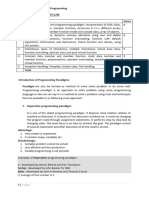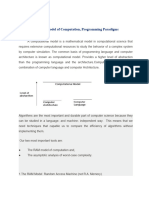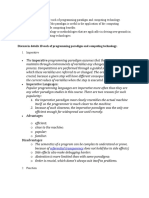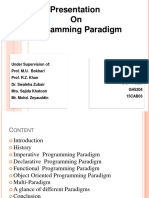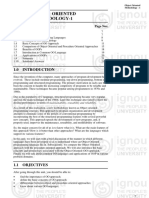0% found this document useful (0 votes)
11 views36 pagesOops Notes Unit 1
The document discusses various programming paradigms, including imperative, declarative, and object-oriented programming, highlighting their characteristics, advantages, and examples. It explains concepts like classes, objects, encapsulation, abstraction, polymorphism, inheritance, dynamic binding, and message passing in the context of object-oriented programming. Each paradigm is described in terms of its approach to problem-solving and the methodologies it employs.
Uploaded by
22embit056Copyright
© © All Rights Reserved
We take content rights seriously. If you suspect this is your content, claim it here.
Available Formats
Download as DOCX, PDF, TXT or read online on Scribd
0% found this document useful (0 votes)
11 views36 pagesOops Notes Unit 1
The document discusses various programming paradigms, including imperative, declarative, and object-oriented programming, highlighting their characteristics, advantages, and examples. It explains concepts like classes, objects, encapsulation, abstraction, polymorphism, inheritance, dynamic binding, and message passing in the context of object-oriented programming. Each paradigm is described in terms of its approach to problem-solving and the methodologies it employs.
Uploaded by
22embit056Copyright
© © All Rights Reserved
We take content rights seriously. If you suspect this is your content, claim it here.
Available Formats
Download as DOCX, PDF, TXT or read online on Scribd
/ 36






